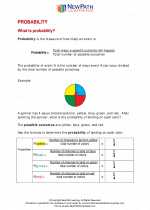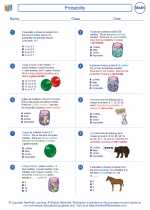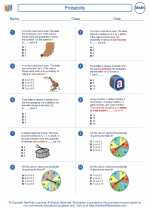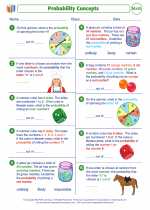Algebraic Expression
Definition
An algebraic expression is a mathematical phrase that can contain numbers, variables, and operations such as addition, subtraction, multiplication, and division.
Components of an Algebraic Expression
1. Variables: These are symbols (usually letters) that represent unknown or unspecified numbers.
2. Constants: These are fixed values that do not change.
3. Coefficients: These are the numbers that are multiplied by the variables.
4. Terms: These are the individual parts of an algebraic expression that are separated by addition or subtraction.
5. Operations: These are the mathematical operations such as addition, subtraction, multiplication, and division.
Examples
1. 3x + 5y - This is an algebraic expression with the terms "3x" and "5y", where "3" and "5" are coefficients and "x" and "y" are variables.
2. 2a - 7 - This is an algebraic expression with the terms "2a" and "7", where "2" is a coefficient and "a" is a variable, and "7" is a constant.
3. 4x2 - 3xy + 8 - This is an algebraic expression with the terms "4x2", "3xy", and "8", where "4", "3", and "8" are coefficients and "x" and "y" are variables.
Study Guide
When working with algebraic expressions, it's important to understand the basic components and operations involved. Here are some key points to remember:
1. Identify the variables, constants, and coefficients in the expression.
2. Combine like terms by adding or subtracting them based on their variables.
3. Use the distributive property to simplify expressions by multiplying terms inside parentheses.
4. Apply the order of operations (PEMDAS - Parentheses, Exponents, Multiplication and Division, Addition and Subtraction) when evaluating or simplifying expressions.
.◂Math Worksheets and Study Guides Fifth Grade. Probability

 Worksheet/Answer key
Worksheet/Answer key
 Worksheet/Answer key
Worksheet/Answer key
 Worksheet/Answer key
Worksheet/Answer key
 Worksheet/Answer key
Worksheet/Answer key
